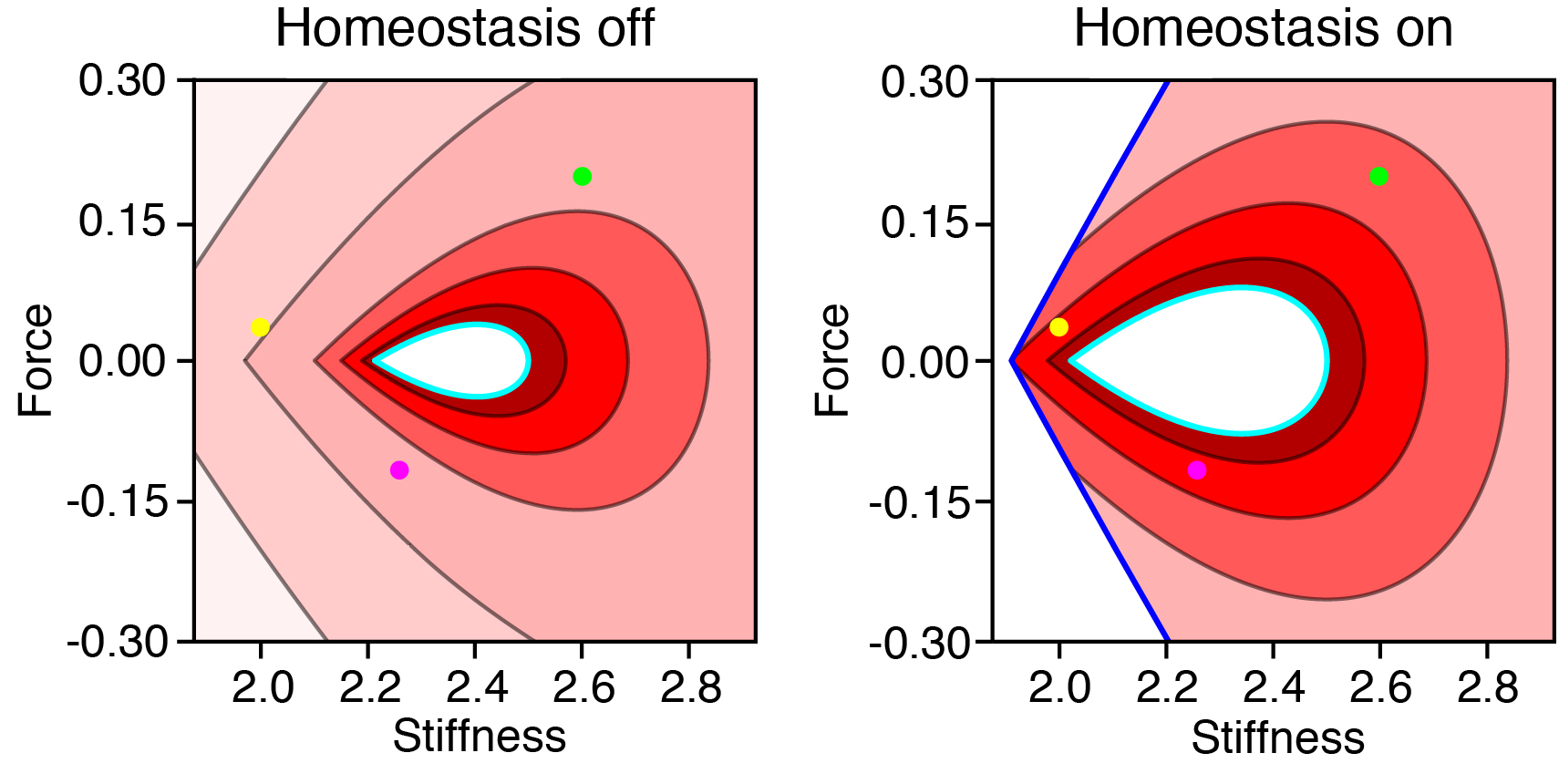Homeostatic regulation of sensory transduction
Our sense of hearing boasts high sensitivity, precise frequency discrimination, and a broad dynamic range. Experiments and modeling imply, however, that the auditory system achieves this performance for only a narrow range of parameter values. Small changes in these values could compromise hair cells’ ability to detect stimuli. We propose that, rather than exerting tight control over parameters, the auditory system employs a homeostatic mechanism that increases the robustness of its operation to variation in parameter values. To slowly adjust the response to sinusoidal stimulation, the homeostatic mechanism feeds back a rectified version of the hair bundle’s displacement to its adaptation process. When homeostasis is enforced, the range of parameter values for which the sensitivity, tuning sharpness, and dynamic range exceed specified thresholds can increase by more than an order of magnitude. Signatures in the hair cell’s behavior provide a means to determine through experiment whether such a mechanism operates in the auditory system. Robustness of function through homeostasis may be ensured in any system through mechanisms similar to those that we describe.

Two state diagrams show the sensitivity of a hair bundle as functions of the applied stiffness and constant force. Successively darker shades of red indicate progressively higher sensitivities to mechanical stimulation. The activation of homeostasis (right) enhances the robustness of the hair bundle’s response to small-amplitude sinusoidal signals by expanding the areas enclosed by the sensitivity contours. For example, the points marked in green, magenta, and yellow increase their sensitivity by respectively one, two, and three levels. The Hopf bifurcation curve is colored cyan and the blue curve marks the boundary of the underdamped region.
